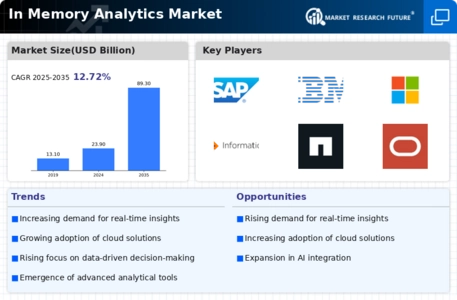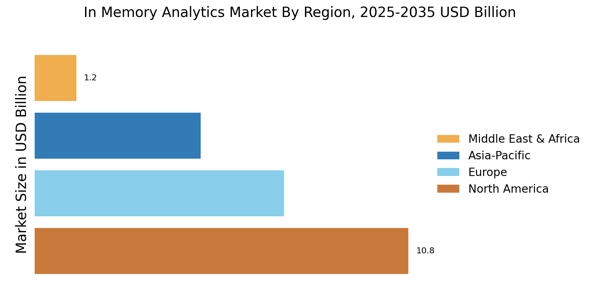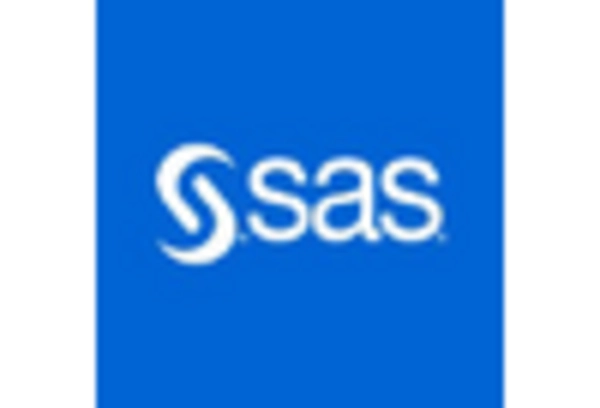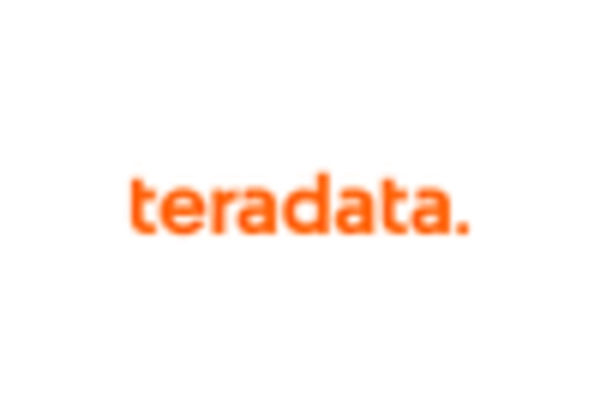Growing Demand for Real-Time Insights
The In Memory Analytics Market is experiencing a surge in demand for real-time insights across various sectors. Organizations are increasingly recognizing the value of immediate data analysis to enhance decision-making processes. This trend is particularly evident in industries such as finance and retail, where timely information can lead to competitive advantages. According to recent estimates, the market for real-time analytics is projected to grow at a compound annual growth rate of over 30% in the coming years. This growth is driven by the need for businesses to respond swiftly to market changes and customer preferences, thereby solidifying the role of in-memory analytics as a critical tool for operational efficiency.
Emergence of Advanced Analytical Tools
The emergence of advanced analytical tools is reshaping the In Memory Analytics Market. Organizations are increasingly adopting sophisticated analytics platforms that leverage in-memory processing capabilities to enhance their analytical capabilities. These tools enable users to perform complex analyses and visualize data in real-time, which is essential for strategic planning and operational optimization. The market for advanced analytics is expected to grow significantly, with projections indicating a potential increase of over 18% in the coming years. This trend reflects a broader shift towards data-driven decision-making, where in-memory analytics plays a pivotal role in empowering organizations to leverage their data assets effectively.
Rising Adoption of Big Data Technologies
The increasing adoption of big data technologies is a key driver for the In Memory Analytics Market. As organizations accumulate vast datasets, the need for effective analytics solutions becomes critical. In-memory analytics provides the capability to process large volumes of data in real-time, enabling businesses to derive actionable insights quickly. This trend is particularly pronounced in sectors such as healthcare and telecommunications, where data-driven decision-making is essential. The market for big data analytics is anticipated to grow significantly, with estimates suggesting a potential expansion of over 20% annually. This growth underscores the importance of in-memory analytics in harnessing the power of big data.
Advancements in Data Storage Technologies
Technological advancements in data storage are significantly influencing the In Memory Analytics Market. The development of high-speed memory technologies, such as non-volatile memory and flash storage, has enabled organizations to store and process vast amounts of data more efficiently. This evolution allows for faster data retrieval and analysis, which is essential for in-memory analytics solutions. As organizations continue to generate massive volumes of data, the need for robust storage solutions becomes paramount. The market for in-memory data storage is expected to witness substantial growth, with projections indicating a potential increase of over 25% in the next few years, further propelling the in-memory analytics sector.
Need for Enhanced Business Intelligence Solutions
The demand for enhanced business intelligence solutions is driving growth in the In Memory Analytics Market. Organizations are increasingly seeking tools that provide deeper insights into their operations and customer behaviors. In-memory analytics offers the capability to analyze data from multiple sources in real-time, facilitating more informed decision-making. This trend is particularly relevant in sectors such as manufacturing and logistics, where operational efficiency is paramount. The business intelligence market is projected to grow at a rate of approximately 15% annually, indicating a strong preference for advanced analytics solutions. This growth highlights the critical role of in-memory analytics in meeting the evolving needs of businesses.


















Leave a Comment